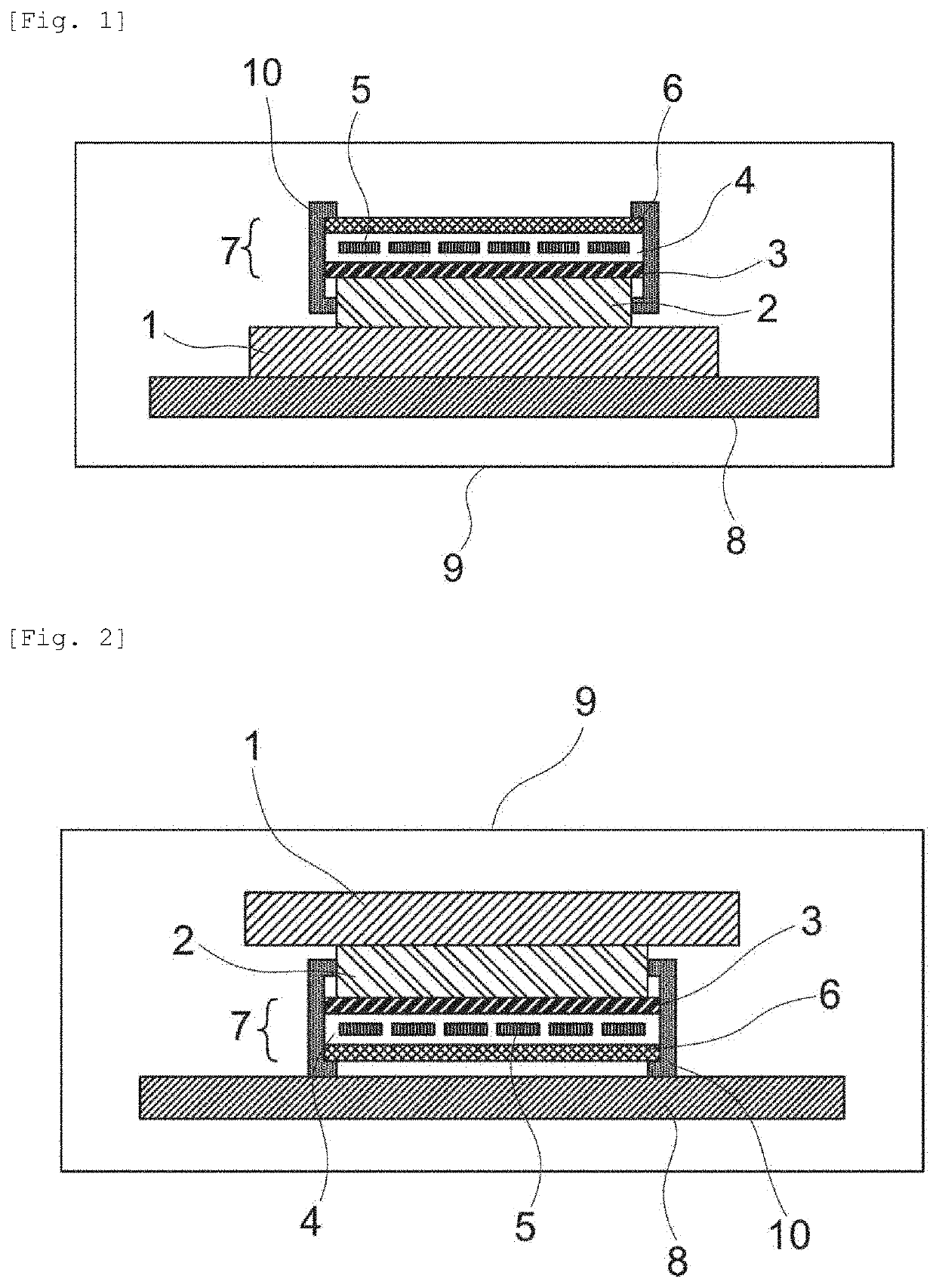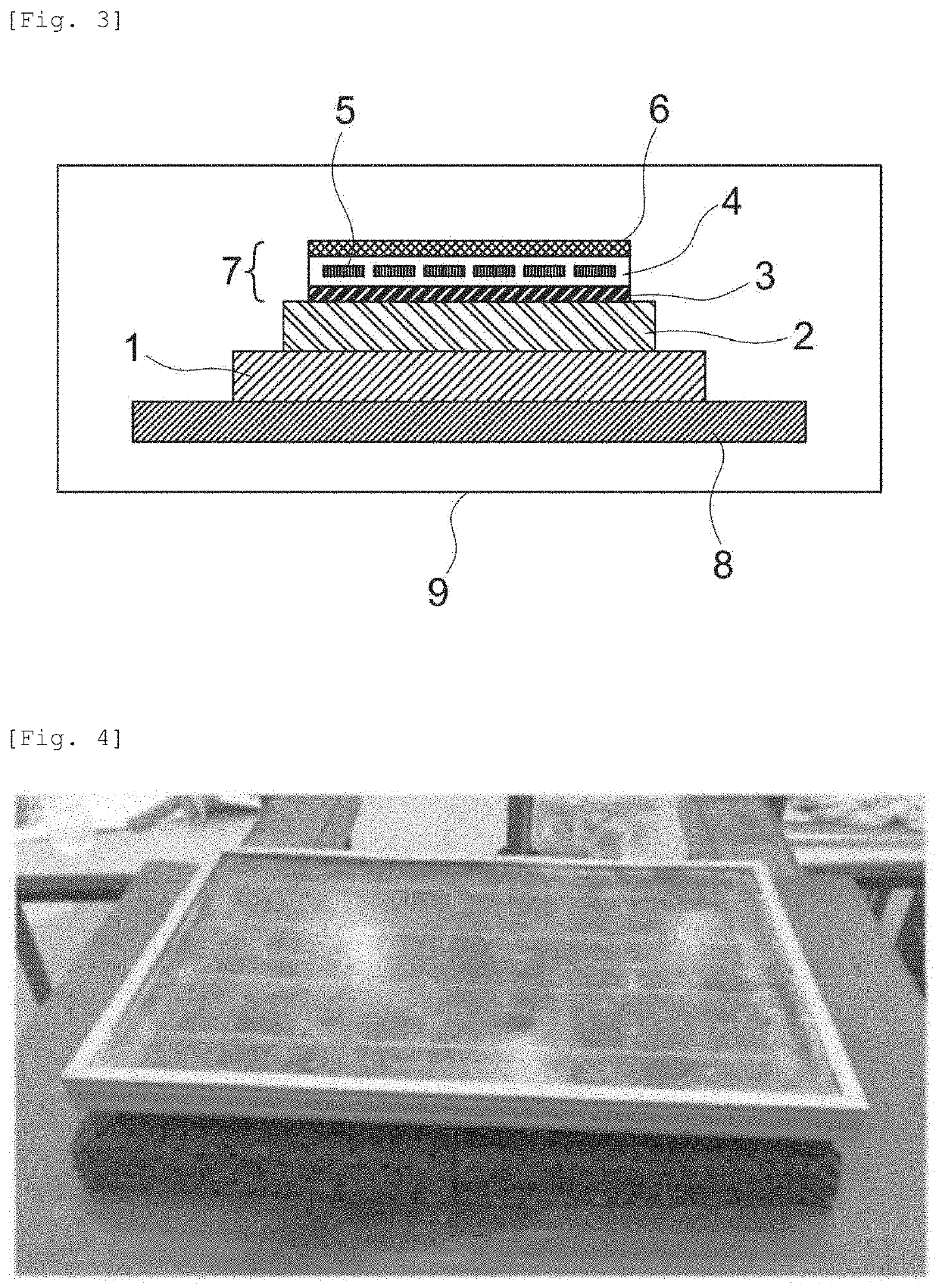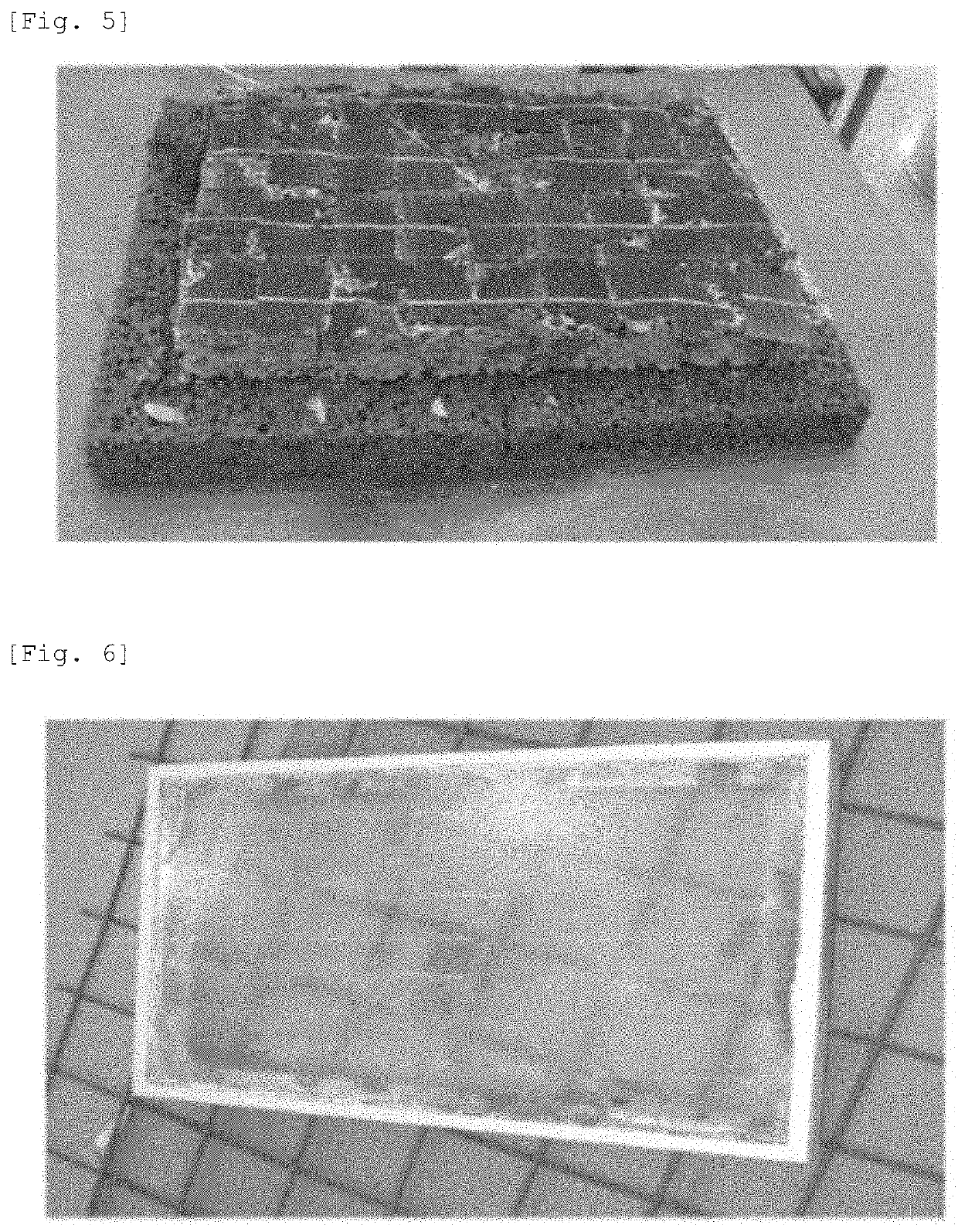Method of Recovering Valuable Materials from Photovoltaic Module
- Summary
- Abstract
- Description
- Claims
- Application Information
AI Technical Summary
Benefits of technology
Problems solved by technology
Method used
Image
Examples
example 1
[0059]As the photovoltaic module (X), an experiment was conducted using a polycrystalline silicon photovoltaic module with an aluminum frame, “PORTABLE SOLAR CHARGING KIT MODEL: SY-M5W” (290 mm×188 mm) manufactured by SUNYO. The electrodes attached to the back sheet were removed using a flat-bladed screwdriver and a hammer before the heating combustion experiment such that the glass was not damaged. Note that the back sheet of this photovoltaic module (X) had a three-layer structure with a thickness of 270 μm, and 90% by mass of the constituents was PET.
[0060]For the ceramic filter as the porous molded body (A), FCF-2 (made of silicon carbide) 10 ppi 200 mm×200 mm×27.5 mmt (vacancy ratio: 87%) manufactured by SEISEN FILTER was used. This ceramic filter was cut into (1) 150 mm×200 mm×27.5 mmt and (2) 50 mm×150 mm×27.5 mmt by water jet processing.
[0061]Wako 1st Grade chromium(III) oxide (manufactured by FUJIFILM Wako Pure Chemical Corporation) was stirred while suspended in water, and...
example 2
[0064]Wako 1st Grade iron(III) oxide (manufactured by FUJIFILM Wako Pure Chemical Corporation) was stirred while suspended in water, and the two ceramic filters of (1) were immersed to perform dip coating and dried at 450° C. The masses before coating were 341 g and 338 g, and the masses after coating and drying were 399 g and 402 g.
[0065]Except that these two ceramic filters coated with iron(III) oxide were used instead of the ceramic filters coated with chromium(III) oxide at the lowest stage, the heat treatment was performed with Roller Hearth Kiln in the same manner as in Example 1. Approximately 30 minutes after the start of heating, spontaneous ignition occurred and stable flaming combustion continued for 10 minutes. After thermal decomposition, the glass could be recovered without breaking, and the cell and inorganic powder could also be recovered. Furthermore, attachment of “soot” was not observed in the ceramic filter at the lowest stage, which was used as the heat-resistan...
example 3
[0066]Guaranteed Reagent titanium(IV) oxide (manufactured by FUJIFILM Wako Pure Chemical Corporation) rutile type was stirred while suspended in water, and the two ceramic filters of (1) were immersed to perform dip coating and dried at 450° C. The masses before coating were 351 g and 357 g, and the masses after coating and drying were 407 g and 417 g.
[0067]Except that these two ceramic filters coated with titanium(IV) oxide were used instead of the ceramic filters coated with chromium(III) oxide at the lowest stage, the heat treatment was performed with Roller Hearth Kiln in the same manner as in Example 1. Approximately 30 minutes after the start of heating, spontaneous ignition occurred and stable flaming combustion continued for 10 minutes. After thermal decomposition, the glass could be recovered without breaking, and the cell and inorganic powder could also be recovered. Furthermore, attachment of “soot” was not observed in the ceramic filter at the lowest stage, which was use...
PUM
| Property | Measurement | Unit |
|---|---|---|
| Electrical resistance | aaaaa | aaaaa |
Abstract
Description
Claims
Application Information
 Login to View More
Login to View More - R&D
- Intellectual Property
- Life Sciences
- Materials
- Tech Scout
- Unparalleled Data Quality
- Higher Quality Content
- 60% Fewer Hallucinations
Browse by: Latest US Patents, China's latest patents, Technical Efficacy Thesaurus, Application Domain, Technology Topic, Popular Technical Reports.
© 2025 PatSnap. All rights reserved.Legal|Privacy policy|Modern Slavery Act Transparency Statement|Sitemap|About US| Contact US: help@patsnap.com



